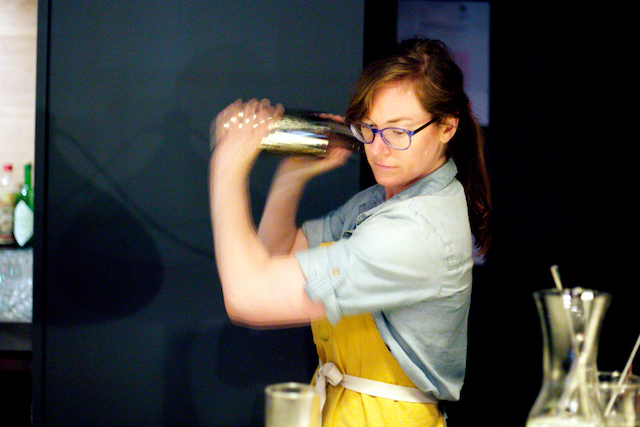 I met up with bartender Shanna Farrell, who works at Hamlet, a restaurant in Noe Valley in San Francisco. Shanna and I got together in Berkeley to talk about her work, including a book about the craft cocktail revival that she's writing and about to put out. Without further ado, we'll go right into the interview: How long have you been bartending? I've been in the service industry since I was 20. The first bartending gig I had was at a counter in Boston at a pizza joint. It was beer and wine and low ABV everything. But when I moved to New York for grad school, I started bartending at a wine bar in Brooklyn Heights. So that's where I was working before I moved to California. Where did you start to learn about craft cocktails? That was at the wine bar in Brooklyn Heights. My co-bar manager had worked at the Rainbow Room with Dale DeGroff years ago and had a framework for cocktails. He didn't jigger-pour much. When I started getting interested [in craft cocktails], I started reading more and looking more into it. I was like, "Oh, you have to jigger-pour." I started going to Amor y Amargo a lot, which is a bar in the East Village that sells bar supplies. I remember getting really excited the first time I went in to buy a bunch of bar tools. The first cocktail that I ever made was a Pisco Sour, so I have a really special place in my heart for Pisco Sours. Anytime anyone orders one I get really excited. Give me a time frame on this. When was this happening in New York? That's a good question. I was in grad school from 2008 until 2012, so it was around then. So the cocktail boom had already hit in New York by then. The ball was already rolling. Yeah. PDT was open, because I remember going there for my 25th birthday. I'm turning 33 in December, so that was eight years ago. PDT was open, Death & Co was open. I remember a lot of the newer bars opening that you think of today as standard, like Amor y Amargo and Pouring Ribbons. I remember going to the bar that Pouring Ribbons was before it was Pouring Ribbons. Actually, the original idea for the Oral History Project was to do an oral history of East Coast bars, but then I got a job at UC Berkeley, which brought me out to California.
I met up with bartender Shanna Farrell, who works at Hamlet, a restaurant in Noe Valley in San Francisco. Shanna and I got together in Berkeley to talk about her work, including a book about the craft cocktail revival that she's writing and about to put out. Without further ado, we'll go right into the interview: How long have you been bartending? I've been in the service industry since I was 20. The first bartending gig I had was at a counter in Boston at a pizza joint. It was beer and wine and low ABV everything. But when I moved to New York for grad school, I started bartending at a wine bar in Brooklyn Heights. So that's where I was working before I moved to California. Where did you start to learn about craft cocktails? That was at the wine bar in Brooklyn Heights. My co-bar manager had worked at the Rainbow Room with Dale DeGroff years ago and had a framework for cocktails. He didn't jigger-pour much. When I started getting interested [in craft cocktails], I started reading more and looking more into it. I was like, "Oh, you have to jigger-pour." I started going to Amor y Amargo a lot, which is a bar in the East Village that sells bar supplies. I remember getting really excited the first time I went in to buy a bunch of bar tools. The first cocktail that I ever made was a Pisco Sour, so I have a really special place in my heart for Pisco Sours. Anytime anyone orders one I get really excited. Give me a time frame on this. When was this happening in New York? That's a good question. I was in grad school from 2008 until 2012, so it was around then. So the cocktail boom had already hit in New York by then. The ball was already rolling. Yeah. PDT was open, because I remember going there for my 25th birthday. I'm turning 33 in December, so that was eight years ago. PDT was open, Death & Co was open. I remember a lot of the newer bars opening that you think of today as standard, like Amor y Amargo and Pouring Ribbons. I remember going to the bar that Pouring Ribbons was before it was Pouring Ribbons. Actually, the original idea for the Oral History Project was to do an oral history of East Coast bars, but then I got a job at UC Berkeley, which brought me out to California. 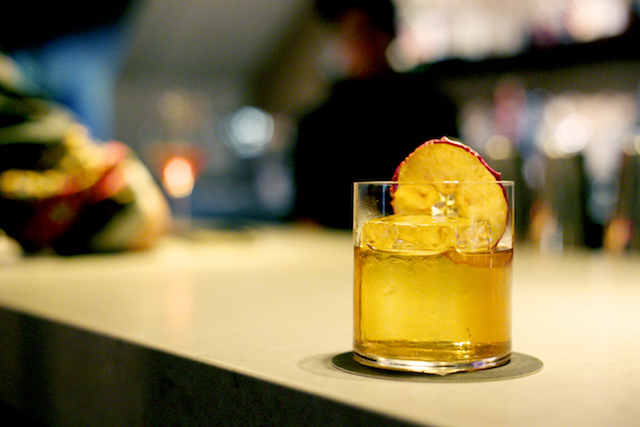
Tell us more about the Oral History Project. You have a book coming out. I do, yes! I'm writing it right now. The manuscript is due in January and it'll be out in July 2017. I work at Hamlet a couple of nights a week, but I also work full-time at UC Berkeley in the Oral History Center. I specialize in cocktail history and have been doing a West Coast Cocktail Oral History Project. I was approached by a publisher back in the Spring of 2016 to put together a proposal. I'm more interested in radio, so I wasn't thinking that the book was the end goal. But, I talked to the publisher and it seemed like a really good fit. So I basically expanded the West Coast project, but I'm focusing on the Bay Area now. I've been interviewing bar owners, bartenders, and some writers about the modern cocktail revival. Oh, and distillers, because they play a big role, too. What kind of challenges have you had putting the book together? Work-life balance is a challenge. I worked pretty hard to build a community when I moved here, so now, when people ask me to hang out, I would love to, but I often have to say "no" and that pains me. Honestly, that's been the biggest challenge. Everybody who I've approached to interview has been so incredibly generous and so supportive with their time. I've had access to people who I really just never thought that I would. I did a phone interview with Paul Harrington. That was really awesome. The Berkeley name has opened a lot of doors. The Bay Area community has been so supportive. The level of support has been just humbling and incredible. You had that East Bay cocktail event at Starline Social Club as well. I did! I didn't get an advance for the book, so it was up to me to put together the photography. I was really lucky to have a good friend of mine do the still photography. His name is Nando Alvarez-Perez. A friend of mine came out from New York and she's a photo stylist. We took about 85 photos in four days, it was crazy. Jon Santer from Prizefighter is taking the portraits. So I have a really great team. I'm lucky to have [Jon] because he's got good relationships with everyone I need portraits of. I needed to pay them, obviously, so I did a fundraising event at Starline in August. I contacted Sam White [owner of Starline Social Club] and he said, "Yeah let's do something here." I asked Yoko and Kayoko from Umami Mart, Dylan O'Brien from Prizefighter, and Chris Lane from Ramen Shop to join me for the panel conversation and was lucky that they all said yes. The event brought in over $1200. I was able to parlay that into a crowdfunding campaign where I'm doing a book pre-sale now. Are there any big differences between bartending here in the Bay Area versus New York? Lots. But not. It's one of the things I explore in the Oral History Project. It's really interesting. Neighborhood trends dictate menus more than people give them credit for. So when I was working in Brooklyn Heights, I was serving a very specific type of drinker. There were whisky drinkers, there were vodka drinkers. You would only get a few people who would come in for a drink outside of their comfort zone. People would stick to what they knew. They weren't really adventurous. You go to the East Village and people are adventurous! They want to try new things. In Oakland, people are more adventurous and if you have something that's homemade or seasonal, they're all about it – they jump on it. The weirder it sounds, the better; they want it! When I was trained to make drinks in New York, it followed a 3-ounces ingredients, 2-ounces of dilution. All cocktails were supposed to be 5 ounces. Those rules don't apply [in the Bay Area]; it's more proportional. What were the first bars you worked at when you first moved to the Bay Area? So I did a brief stint at Comal, bartending. And then I was at Blind Tiger. I helped open that bar. I was there for a couple months. Then I moved over to Hamlet in May. Tell me more about working at Hamlet. We have a lot of vodka and whisky drinkers. Sometimes we'll get a Tiki enthusiast and we'll get excited because we have a couple of plays on Tiki drinks. Our bar manager loves rum, so it's fun to represent that category. We also have an extensive wine list. The owner does the wine list and he loves weird wine, in the best possible way. We have very similar palates so I love the wines he [selects]. A lot of are not well-known. We have lot of Sicilian wines, Croatian wines, and Sardinian wines. But people won't drink it because they don't know it. They'll just ask, "Can I just have a sauvignon blanc?" 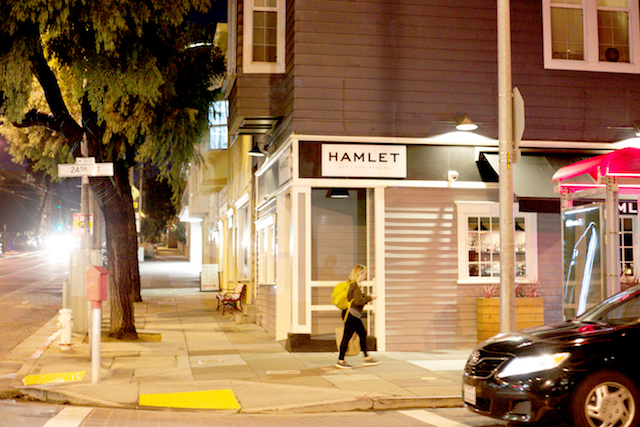 What are some of your favorite bars in Berkeley? When I first moved here I started going to East Bay Spice Company because it was right off of the Cal campus. That was great. Their bar manager at the time had a really great knowledge of drinks. He had a really great Rolodex in his brain. Bars have started popping up. Now when I go out in the East Bay, I go to Prizefighter [in Emeryville]. It's my favorite. I was going to Acme Bar quite a bit when I first moved here too. They have a really great whisky selection. But yeah, Prizefighter... they're my homies now. Prizefighter comes up a lot in these interviews, and rightfully so. They know how to make a good cocktail. Yeah, they do. You walk in there and you feel welcome and that's huge. I think that in the Bay Area that is one of the biggest differences. That you do feel welcome when you walk into bars. I've had a handful of times where I feel like I'm doing something wrong by walking in to a bar and ordering a drink. It doesn't happen a lot and it hasn't ever happened in the East Bay. I spend a significant time traveling around the country and I go to a lot of bars. There are very few bars like Prizefighter out there. It is a really special place. Do you have any ideal customers? Or red flag customers? I'll start with the ideal customers. People who come in who acknowledge you, say hello. Treat you like a human. I love when customers ask a few questions but they're not trying to dominate a conversation. They're often the ones who make friends with people around them and so it becomes the whole bar is having a conversation. People who can come and do that and move around easily and socially like that, I love that. Or [customers who] know some of the ingredients and want to talk about that. That's always fun. There definitely are the red flag customers. There's a lot of misinformation that gets passed around the Internet. You'll get people who come in and have some misinformation and will want to talk about it. Sometimes I listen to them and I cringe a little bit, but I don't always want to be the jerk who corrects them. Like what? I'm dying to know. You know one thing I hear all the time is about St. George Spirits. I've done life history interviews with their founder Jörg Rupf and Lance Winters. I've written articles about them, so I'm pretty familiar with them. But when I hear people come in and talk about Hangar 1, saying "St. George got sold" or "They sold out to Hangar 1" or "They're getting brand money from Hangar 1," I know that's just completely wrong. And it's one of those times where I can't control myself and say, "That's not right!" The other thing: "Tiki culture was invented in San Francisco." It wasn't. It originated in Southern California. I'm a little bit more gentle about my corrections with that one. It does have a huge presence here and that should not be discounted. The Mai Tai was not the first Tiki cocktail. I hear that a lot. In response to that I actually wrote an article for Edible East Bay about modern cocktail myths and I included both the St. George and the Mai Tai in there.
What are some of your favorite bars in Berkeley? When I first moved here I started going to East Bay Spice Company because it was right off of the Cal campus. That was great. Their bar manager at the time had a really great knowledge of drinks. He had a really great Rolodex in his brain. Bars have started popping up. Now when I go out in the East Bay, I go to Prizefighter [in Emeryville]. It's my favorite. I was going to Acme Bar quite a bit when I first moved here too. They have a really great whisky selection. But yeah, Prizefighter... they're my homies now. Prizefighter comes up a lot in these interviews, and rightfully so. They know how to make a good cocktail. Yeah, they do. You walk in there and you feel welcome and that's huge. I think that in the Bay Area that is one of the biggest differences. That you do feel welcome when you walk into bars. I've had a handful of times where I feel like I'm doing something wrong by walking in to a bar and ordering a drink. It doesn't happen a lot and it hasn't ever happened in the East Bay. I spend a significant time traveling around the country and I go to a lot of bars. There are very few bars like Prizefighter out there. It is a really special place. Do you have any ideal customers? Or red flag customers? I'll start with the ideal customers. People who come in who acknowledge you, say hello. Treat you like a human. I love when customers ask a few questions but they're not trying to dominate a conversation. They're often the ones who make friends with people around them and so it becomes the whole bar is having a conversation. People who can come and do that and move around easily and socially like that, I love that. Or [customers who] know some of the ingredients and want to talk about that. That's always fun. There definitely are the red flag customers. There's a lot of misinformation that gets passed around the Internet. You'll get people who come in and have some misinformation and will want to talk about it. Sometimes I listen to them and I cringe a little bit, but I don't always want to be the jerk who corrects them. Like what? I'm dying to know. You know one thing I hear all the time is about St. George Spirits. I've done life history interviews with their founder Jörg Rupf and Lance Winters. I've written articles about them, so I'm pretty familiar with them. But when I hear people come in and talk about Hangar 1, saying "St. George got sold" or "They sold out to Hangar 1" or "They're getting brand money from Hangar 1," I know that's just completely wrong. And it's one of those times where I can't control myself and say, "That's not right!" The other thing: "Tiki culture was invented in San Francisco." It wasn't. It originated in Southern California. I'm a little bit more gentle about my corrections with that one. It does have a huge presence here and that should not be discounted. The Mai Tai was not the first Tiki cocktail. I hear that a lot. In response to that I actually wrote an article for Edible East Bay about modern cocktail myths and I included both the St. George and the Mai Tai in there. 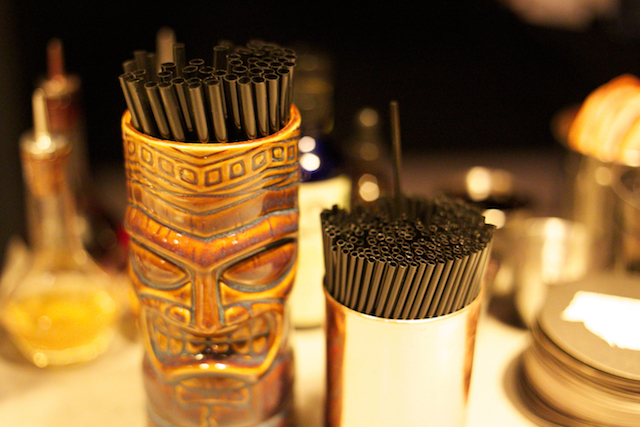 I'm going to ask you the usual questions I ask for Bartender Spotlight. Do you have a favorite glass? I'm a huge fan of rocks glasses. I am not blowing smoke right now – the Umami Mart glasses I'm really into right now are the large double rocks glasses with the gold rims. We just got a couple of those recently and I love them so much. Yoko and Kayoko let me borrow some glassware for the book photoshoot, including those glasses. The whole time [during the shoot] I was like, "I'm going to buy one of these." Very cool. Do you have a favorite bar tool? I just got a new barspoon. I went to a conference in Charleston, South Carolina last August called BevCon. They had a couple vendors out and the new spoon fits really well with the Umami Mart short mixing glass and a mixing glass from Bull in China. The spoon is big. If you're measuring a barspoon of something, it's a little bit too big. But the smoothness to the stir is incredible. The way it's designed was to run along the bottom side of the mixing glass in a continuous motion. Do you have a favorite bar food? Yes. Blistered shishito peppers. Is there a place you like to get that at? Lolinda, Loló, and home. My boyfriend is a bartender and he makes a mean blistered shishito or padron pepper dish.
I'm going to ask you the usual questions I ask for Bartender Spotlight. Do you have a favorite glass? I'm a huge fan of rocks glasses. I am not blowing smoke right now – the Umami Mart glasses I'm really into right now are the large double rocks glasses with the gold rims. We just got a couple of those recently and I love them so much. Yoko and Kayoko let me borrow some glassware for the book photoshoot, including those glasses. The whole time [during the shoot] I was like, "I'm going to buy one of these." Very cool. Do you have a favorite bar tool? I just got a new barspoon. I went to a conference in Charleston, South Carolina last August called BevCon. They had a couple vendors out and the new spoon fits really well with the Umami Mart short mixing glass and a mixing glass from Bull in China. The spoon is big. If you're measuring a barspoon of something, it's a little bit too big. But the smoothness to the stir is incredible. The way it's designed was to run along the bottom side of the mixing glass in a continuous motion. Do you have a favorite bar food? Yes. Blistered shishito peppers. Is there a place you like to get that at? Lolinda, Loló, and home. My boyfriend is a bartender and he makes a mean blistered shishito or padron pepper dish. 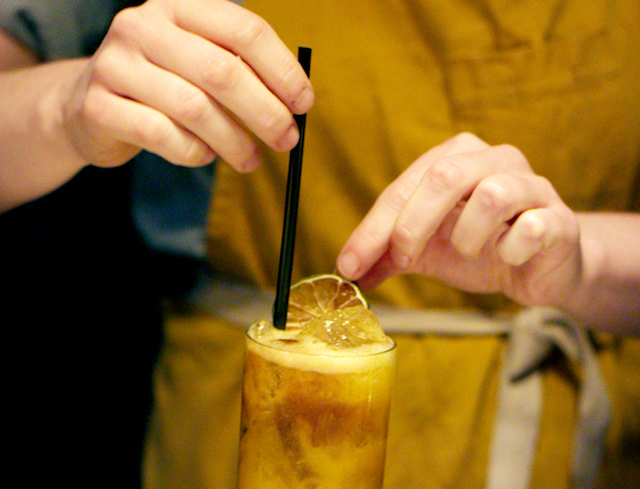 Do you have a favorite Bay Area bar? Prizefighter, definitely. Also, Loló. It's similar to Prizefighter when you walk in, you're greeted so warmly. They just do hospitality right. They make you feel like you're part of the party. Also, Ramen Shop. I'm sure you get all the same answers. It's the same thing with Ramen Shop when you walk in – such a warm and friendly greeting. Another one I do want to mention is The Treasury in San Francisco. Carlos Yturria, it's his bar. It's a beautiful space. The drinks are fantastic. I love sherry. There's a presence of sherry on the menu. Their cocktails are really solid. Great bar food. Pigs in a blanket, really good. Do you have a favorite cocktail? The Old Fashioned. I went through a period where I tried all the drinks, but I just keep coming back to the Old Fashioned and all its variations, too. I think that's going to do it for me. Do you have any last words or final thoughts? I want to reiterate how humbled I am to be a part of this community and how much it's meant to me. That people have welcomed me in with open arms and been so supportive. It's made this place feel like home.
Do you have a favorite Bay Area bar? Prizefighter, definitely. Also, Loló. It's similar to Prizefighter when you walk in, you're greeted so warmly. They just do hospitality right. They make you feel like you're part of the party. Also, Ramen Shop. I'm sure you get all the same answers. It's the same thing with Ramen Shop when you walk in – such a warm and friendly greeting. Another one I do want to mention is The Treasury in San Francisco. Carlos Yturria, it's his bar. It's a beautiful space. The drinks are fantastic. I love sherry. There's a presence of sherry on the menu. Their cocktails are really solid. Great bar food. Pigs in a blanket, really good. Do you have a favorite cocktail? The Old Fashioned. I went through a period where I tried all the drinks, but I just keep coming back to the Old Fashioned and all its variations, too. I think that's going to do it for me. Do you have any last words or final thoughts? I want to reiterate how humbled I am to be a part of this community and how much it's meant to me. That people have welcomed me in with open arms and been so supportive. It's made this place feel like home.
You can help Shanna finish her book by pre-ordering a copy. Her crowdfunding campaign ends on December 3, so don't wait!
 What are some of your favorite bars in Berkeley? When I first moved here I started going to East Bay Spice Company because it was right off of the Cal campus. That was great. Their bar manager at the time had a really great knowledge of drinks. He had a really great Rolodex in his brain. Bars have started popping up. Now when I go out in the East Bay, I go to Prizefighter [in Emeryville]. It's my favorite. I was going to Acme Bar quite a bit when I first moved here too. They have a really great whisky selection. But yeah, Prizefighter... they're my homies now. Prizefighter comes up a lot in these interviews, and rightfully so. They know how to make a good cocktail. Yeah, they do. You walk in there and you feel welcome and that's huge. I think that in the Bay Area that is one of the biggest differences. That you do feel welcome when you walk into bars. I've had a handful of times where I feel like I'm doing something wrong by walking in to a bar and ordering a drink. It doesn't happen a lot and it hasn't ever happened in the East Bay. I spend a significant time traveling around the country and I go to a lot of bars. There are very few bars like Prizefighter out there. It is a really special place. Do you have any ideal customers? Or red flag customers? I'll start with the ideal customers. People who come in who acknowledge you, say hello. Treat you like a human. I love when customers ask a few questions but they're not trying to dominate a conversation. They're often the ones who make friends with people around them and so it becomes the whole bar is having a conversation. People who can come and do that and move around easily and socially like that, I love that. Or [customers who] know some of the ingredients and want to talk about that. That's always fun. There definitely are the red flag customers. There's a lot of misinformation that gets passed around the Internet. You'll get people who come in and have some misinformation and will want to talk about it. Sometimes I listen to them and I cringe a little bit, but I don't always want to be the jerk who corrects them. Like what? I'm dying to know. You know one thing I hear all the time is about St. George Spirits. I've done life history interviews with their founder Jörg Rupf and Lance Winters. I've written articles about them, so I'm pretty familiar with them. But when I hear people come in and talk about Hangar 1, saying "St. George got sold" or "They sold out to Hangar 1" or "They're getting brand money from Hangar 1," I know that's just completely wrong. And it's one of those times where I can't control myself and say, "That's not right!" The other thing: "Tiki culture was invented in San Francisco." It wasn't. It originated in Southern California. I'm a little bit more gentle about my corrections with that one. It does have a huge presence here and that should not be discounted. The Mai Tai was not the first Tiki cocktail. I hear that a lot. In response to that I actually wrote an article for Edible East Bay about modern cocktail myths and I included both the St. George and the Mai Tai in there.
What are some of your favorite bars in Berkeley? When I first moved here I started going to East Bay Spice Company because it was right off of the Cal campus. That was great. Their bar manager at the time had a really great knowledge of drinks. He had a really great Rolodex in his brain. Bars have started popping up. Now when I go out in the East Bay, I go to Prizefighter [in Emeryville]. It's my favorite. I was going to Acme Bar quite a bit when I first moved here too. They have a really great whisky selection. But yeah, Prizefighter... they're my homies now. Prizefighter comes up a lot in these interviews, and rightfully so. They know how to make a good cocktail. Yeah, they do. You walk in there and you feel welcome and that's huge. I think that in the Bay Area that is one of the biggest differences. That you do feel welcome when you walk into bars. I've had a handful of times where I feel like I'm doing something wrong by walking in to a bar and ordering a drink. It doesn't happen a lot and it hasn't ever happened in the East Bay. I spend a significant time traveling around the country and I go to a lot of bars. There are very few bars like Prizefighter out there. It is a really special place. Do you have any ideal customers? Or red flag customers? I'll start with the ideal customers. People who come in who acknowledge you, say hello. Treat you like a human. I love when customers ask a few questions but they're not trying to dominate a conversation. They're often the ones who make friends with people around them and so it becomes the whole bar is having a conversation. People who can come and do that and move around easily and socially like that, I love that. Or [customers who] know some of the ingredients and want to talk about that. That's always fun. There definitely are the red flag customers. There's a lot of misinformation that gets passed around the Internet. You'll get people who come in and have some misinformation and will want to talk about it. Sometimes I listen to them and I cringe a little bit, but I don't always want to be the jerk who corrects them. Like what? I'm dying to know. You know one thing I hear all the time is about St. George Spirits. I've done life history interviews with their founder Jörg Rupf and Lance Winters. I've written articles about them, so I'm pretty familiar with them. But when I hear people come in and talk about Hangar 1, saying "St. George got sold" or "They sold out to Hangar 1" or "They're getting brand money from Hangar 1," I know that's just completely wrong. And it's one of those times where I can't control myself and say, "That's not right!" The other thing: "Tiki culture was invented in San Francisco." It wasn't. It originated in Southern California. I'm a little bit more gentle about my corrections with that one. It does have a huge presence here and that should not be discounted. The Mai Tai was not the first Tiki cocktail. I hear that a lot. In response to that I actually wrote an article for Edible East Bay about modern cocktail myths and I included both the St. George and the Mai Tai in there.  I'm going to ask you the usual questions I ask for Bartender Spotlight. Do you have a favorite glass? I'm a huge fan of rocks glasses. I am not blowing smoke right now – the Umami Mart glasses I'm really into right now are the large double rocks glasses with the gold rims. We just got a couple of those recently and I love them so much. Yoko and Kayoko let me borrow some glassware for the book photoshoot, including those glasses. The whole time [during the shoot] I was like, "I'm going to buy one of these." Very cool. Do you have a favorite bar tool? I just got a new barspoon. I went to a conference in Charleston, South Carolina last August called BevCon. They had a couple vendors out and the new spoon fits really well with the Umami Mart short mixing glass and a mixing glass from Bull in China. The spoon is big. If you're measuring a barspoon of something, it's a little bit too big. But the smoothness to the stir is incredible. The way it's designed was to run along the bottom side of the mixing glass in a continuous motion. Do you have a favorite bar food? Yes. Blistered shishito peppers. Is there a place you like to get that at? Lolinda, Loló, and home. My boyfriend is a bartender and he makes a mean blistered shishito or padron pepper dish.
I'm going to ask you the usual questions I ask for Bartender Spotlight. Do you have a favorite glass? I'm a huge fan of rocks glasses. I am not blowing smoke right now – the Umami Mart glasses I'm really into right now are the large double rocks glasses with the gold rims. We just got a couple of those recently and I love them so much. Yoko and Kayoko let me borrow some glassware for the book photoshoot, including those glasses. The whole time [during the shoot] I was like, "I'm going to buy one of these." Very cool. Do you have a favorite bar tool? I just got a new barspoon. I went to a conference in Charleston, South Carolina last August called BevCon. They had a couple vendors out and the new spoon fits really well with the Umami Mart short mixing glass and a mixing glass from Bull in China. The spoon is big. If you're measuring a barspoon of something, it's a little bit too big. But the smoothness to the stir is incredible. The way it's designed was to run along the bottom side of the mixing glass in a continuous motion. Do you have a favorite bar food? Yes. Blistered shishito peppers. Is there a place you like to get that at? Lolinda, Loló, and home. My boyfriend is a bartender and he makes a mean blistered shishito or padron pepper dish.  Do you have a favorite Bay Area bar? Prizefighter, definitely. Also, Loló. It's similar to Prizefighter when you walk in, you're greeted so warmly. They just do hospitality right. They make you feel like you're part of the party. Also, Ramen Shop. I'm sure you get all the same answers. It's the same thing with Ramen Shop when you walk in – such a warm and friendly greeting. Another one I do want to mention is The Treasury in San Francisco. Carlos Yturria, it's his bar. It's a beautiful space. The drinks are fantastic. I love sherry. There's a presence of sherry on the menu. Their cocktails are really solid. Great bar food. Pigs in a blanket, really good. Do you have a favorite cocktail? The Old Fashioned. I went through a period where I tried all the drinks, but I just keep coming back to the Old Fashioned and all its variations, too. I think that's going to do it for me. Do you have any last words or final thoughts? I want to reiterate how humbled I am to be a part of this community and how much it's meant to me. That people have welcomed me in with open arms and been so supportive. It's made this place feel like home.
Do you have a favorite Bay Area bar? Prizefighter, definitely. Also, Loló. It's similar to Prizefighter when you walk in, you're greeted so warmly. They just do hospitality right. They make you feel like you're part of the party. Also, Ramen Shop. I'm sure you get all the same answers. It's the same thing with Ramen Shop when you walk in – such a warm and friendly greeting. Another one I do want to mention is The Treasury in San Francisco. Carlos Yturria, it's his bar. It's a beautiful space. The drinks are fantastic. I love sherry. There's a presence of sherry on the menu. Their cocktails are really solid. Great bar food. Pigs in a blanket, really good. Do you have a favorite cocktail? The Old Fashioned. I went through a period where I tried all the drinks, but I just keep coming back to the Old Fashioned and all its variations, too. I think that's going to do it for me. Do you have any last words or final thoughts? I want to reiterate how humbled I am to be a part of this community and how much it's meant to me. That people have welcomed me in with open arms and been so supportive. It's made this place feel like home.
You can help Shanna finish her book by pre-ordering a copy. Her crowdfunding campaign ends on December 3, so don't wait!

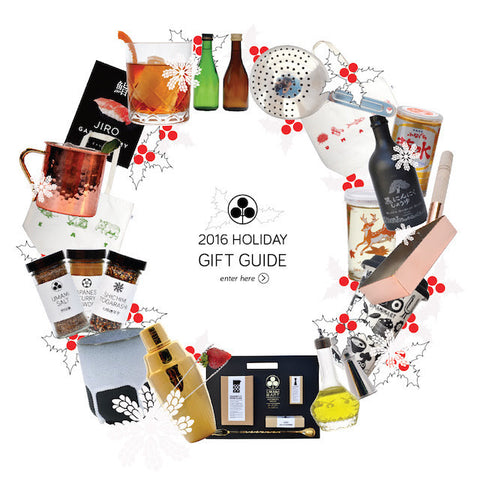
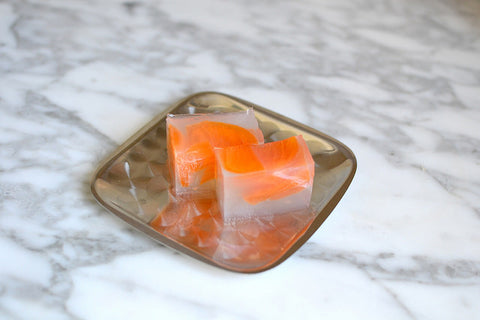

Comments (0)
There are no comments for this article. Be the first one to leave a message!